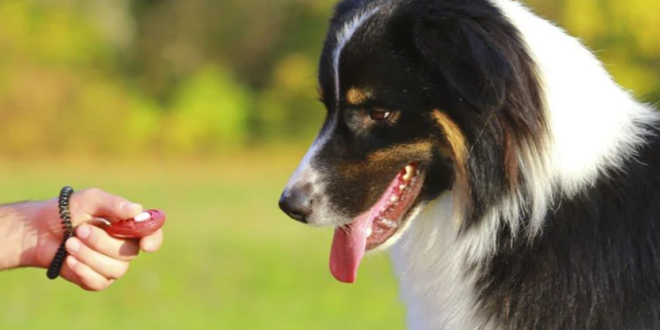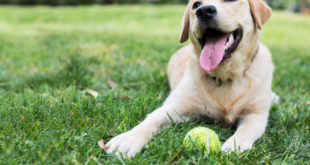How To Train Your Dog To Walk On A Leash – Are you tired of being dragged around like a ragdoll by your enthusiastic pup? Do you dread taking your furry friend for a walk, just because of the struggle to keep them under control on a leash? Fear not, as teaching your dog to walk politely on a leash is not rocket science. All it takes is some patience, consistency, and a little bit of know-how. In this article, we will guide you through the process of leash training your dog, leaving you and your faithful companion free to enjoy your walks together, without any frustration or stress. So, grab your leash and let’s get started!
Table of Contents
1. Unleash The Secret To Walking Your Dog On A Leash With Ease
Walking your dog on a leash can be a struggle, but it doesn’t have to be that way. There are a few secrets that can make this task an enjoyable experience for you and your furry friend.
- Start with the Right Equipment: A good leash and collar or harness can make a big difference. Find something that is comfortable for your dog and easy for you to handle.
- Practice Basic Commands: Before hitting the pavement, teach your dog basic commands like “sit” and “stay”. This will help you gain control in situations where your dog might become overwhelmed.
- Be Patient: Walking on a leash is a skill that takes time to learn. Be patient with your furry friend, and don’t get frustrated if they pull or become distracted.
Once you have these basics down, it’s time to hit the streets. Keep in mind that walking your dog is an opportunity to bond and get some exercise, so enjoy the journey. Remember to reward your dog when they do well and always keep safety in mind.
2. The Perfect Guide To Teaching Your Dog To Behave On A Leash
Teaching your dog to behave on a leash can be a challenge, but it is crucial for both your pet’s safety and your own. Here are some tips to help you achieve the perfect training result for your furry friend.
– Start training with a comfortable collar or harness: Make sure the collar or harness fits well and is comfortable for your dog. Tight collars can cause discomfort and make the training process more difficult.
– Regular walks: Schedule regular walks for your dog and stick to them. Consistency is key when teaching a new behavior.
– Start with short walks: Begin with short walks on a quiet street or in a quiet park. This will help your dog get used to the leash. Gradually increase the length of the walks and introduce more distractions to the environment, like other dogs or people.
– Reward good behavior: When your dog behaves well on the leash, reward them with treats, praise, or playtime. Positive reinforcement reinforces good behavior and encourages them to repeat it.
– Correct bad behavior: If your dog pulls on the leash or jumps up, use a stern voice to say “NO” and stop walking. Wait for them to calm down before continuing the walk. This will teach them that pulling or jumping does not get them where they want to go.
By following these simple steps, you can train your dog to behave perfectly on a leash. Remember, patience and consistency are the key to success in dog training.
3. From Pulling To Strolling: A Step-By-Step Guide To Training Your Dog To Walk On A Leash
Training your furry friend to walk on a leash can be a daunting task. However, with constant practice and patience, both you and your pet will be able to enjoy daily strolls without any hassle. Here’s a step-by-step guide to help you train your dog to walk on a leash.
1. Start from the basics: Before hitting the pavement, it’s important to teach your dog basic commands like “sit” and “come”. This will help you gain control, and they will know what to expect from you.
2. Get comfortable with the leash: Introduce the leash to your dog in a comfortable setting like their home or a fenced area. Let them sniff the leash and reward them for positive behavior while wearing it. This will help them relate the leash to a positive experience.
3. Practice, practice, practice: Start by walking small distances with your pet on a leash while rewarding good behavior. Increase the distance gradually as you both become comfortable. Don’t forget to stay patient and reward with treats or words of praise.
In conclusion, training your dog to walk on a leash is all about teamwork, patience, and lots of treats. Remember, every dog is unique, so don’t be discouraged if it takes longer for your furry friend to catch on. With the right attitude and consistent training, your pet will be a pro at strolling on a leash in no time.
4. Making Leash Training Fun And Rewarding For You And Your Furry Companion
One of the biggest challenges of leash training your dog is keeping your furry companion interested and motivated. Making the training sessions more fun and rewarding can help to keep your dog focused and excited about the process.
Here are a few tips to make leash training more enjoyable for both you and your pup:
– Use treats: Reward your furry friend with treats as they follow you on the leash or perform a desired behaviour. This helps to strengthen positive associations and makes training a more enjoyable experience.
– Vary the route: A change of scenery can work wonders to keep your pup engaged. Take different routes on your walks and let your dog explore new areas and smells. This can help to keep their attention and make the training more fun.
– Incorporate games: Play tug of war or fetch with your dog during breaks in your training sessions. This helps to break up the monotony and keep your pup energized.
Remember, leash training takes time and patience. But by making it a fun and rewarding experience, you can help your furry companion master the art of walking on a leash in no time!
5. Revolutionize Your Dog’s Leash Skills: Tips, Tricks And Techniques That Work Every Time
If you’re tired of your dog tugging on the leash and pulling you in every direction, it’s time to revolutionize their leash skills. With these tips, tricks and techniques, you’ll be able to walk your furry friend with ease every time.
Firstly, it’s important to ensure that your dog’s leash is the correct size and length. A leash that is too short or too long can make it difficult to control your dog. Aim for a leash that is around 6 feet long and avoid retractable leashes as they can be dangerous and don’t offer enough control.
Next, practice walking your dog on a loose leash. This means that your dog should be walking comfortably beside you without pulling on the leash. If your dog starts to pull, stop walking and wait for them to come back to you. Reward your dog when they walk beside you on a loose leash with treats and praise.
Finally, consider using a front-clip harness to help stop your dog from pulling on the leash. When your dog pulls, the harness will turn them around, encouraging them to walk beside you. Be patient and consistent with these techniques, and you’ll soon have a dog with impeccable leash skills.
With a little patience and practice, you and your pup can become a walking pro in no time! Remember to have fun and take breaks whenever needed. Before you know it, your pup will be walking the streets like a pro—on a leash, of course.
 Treat For Dog – Brain Training for Dogs, Dog Training & Obedience Discover Treat For Dog and get your pup on the path to smarter, happier, and healthier living with brain training for dogs.
Treat For Dog – Brain Training for Dogs, Dog Training & Obedience Discover Treat For Dog and get your pup on the path to smarter, happier, and healthier living with brain training for dogs.




